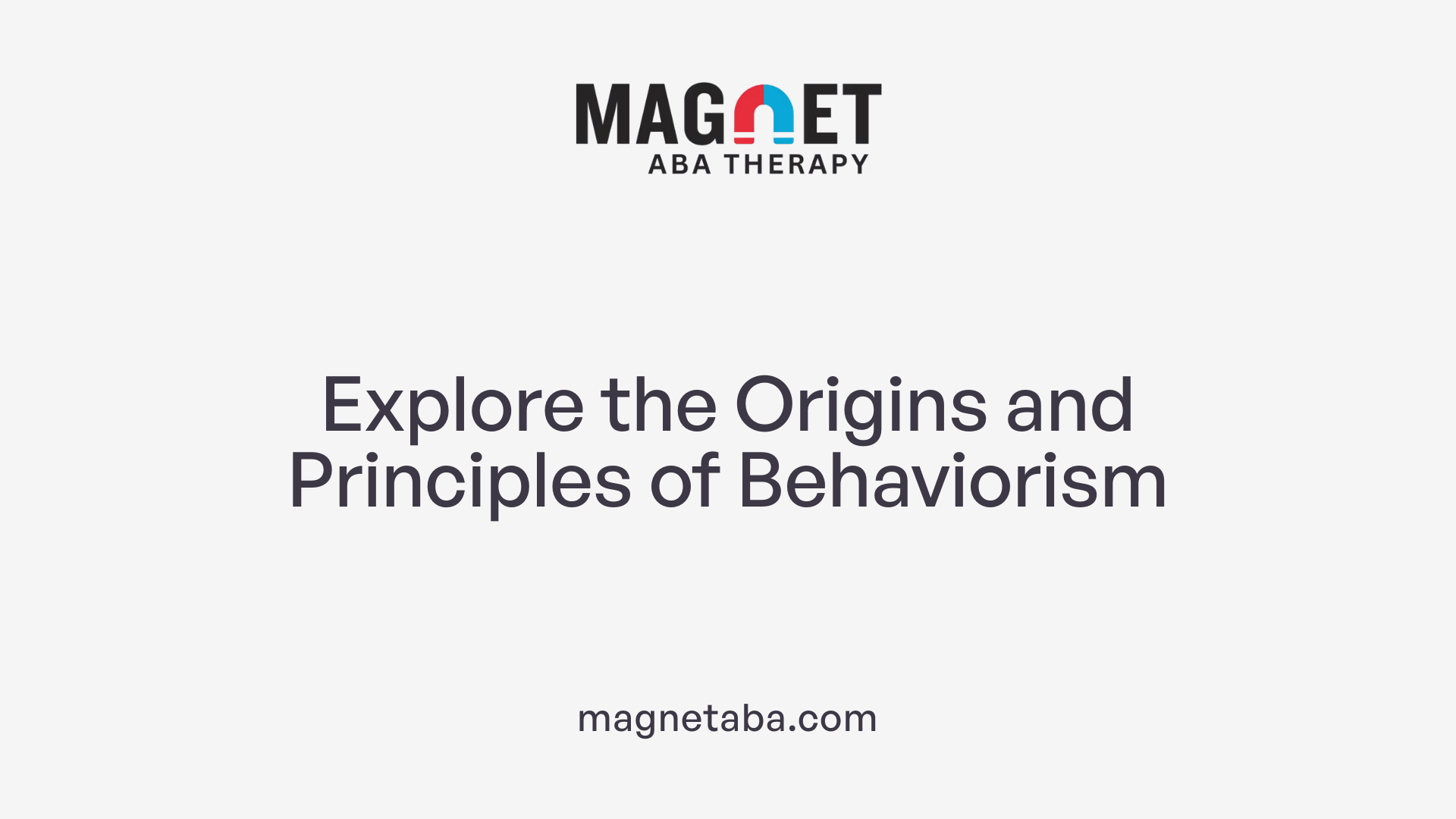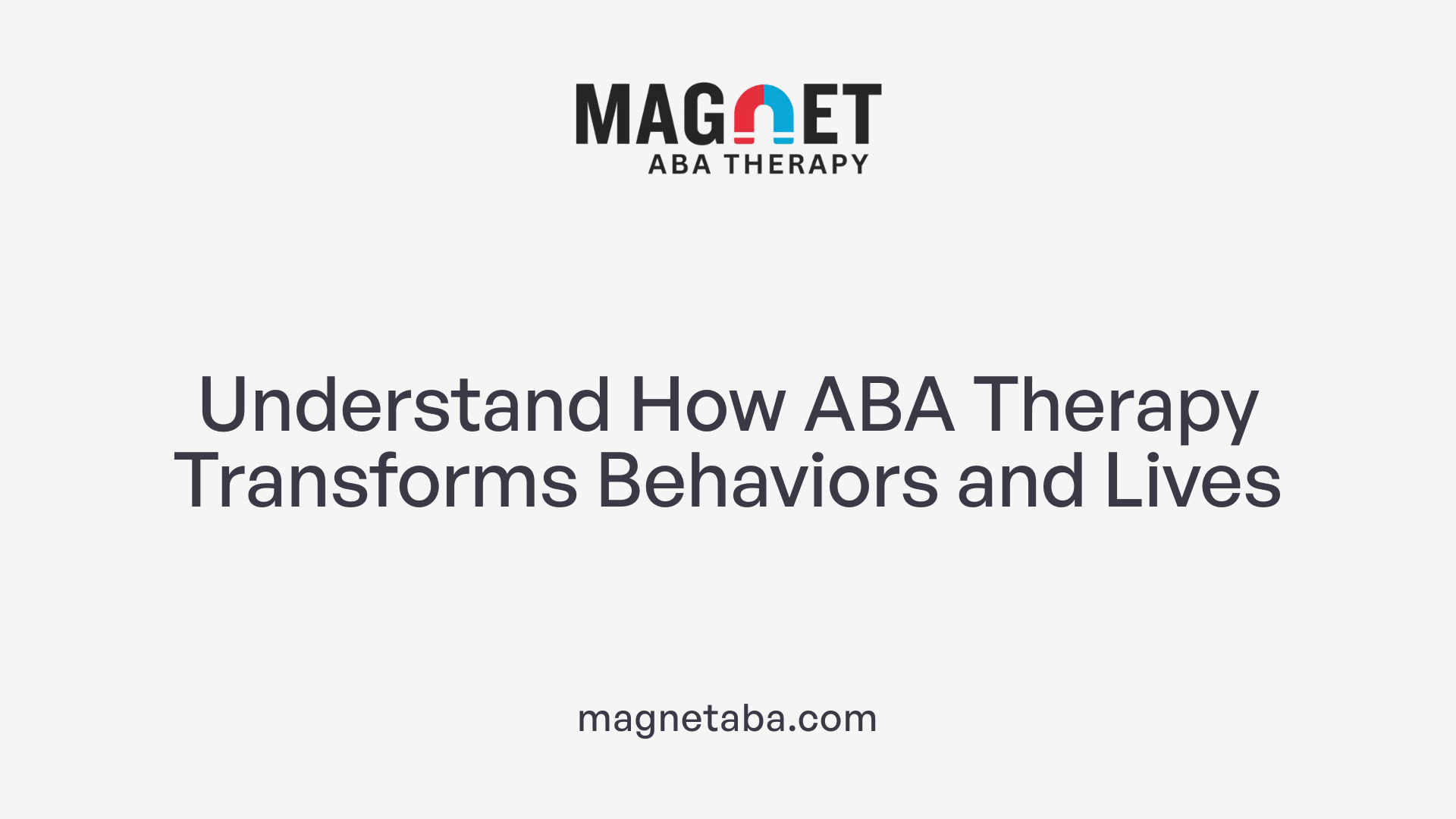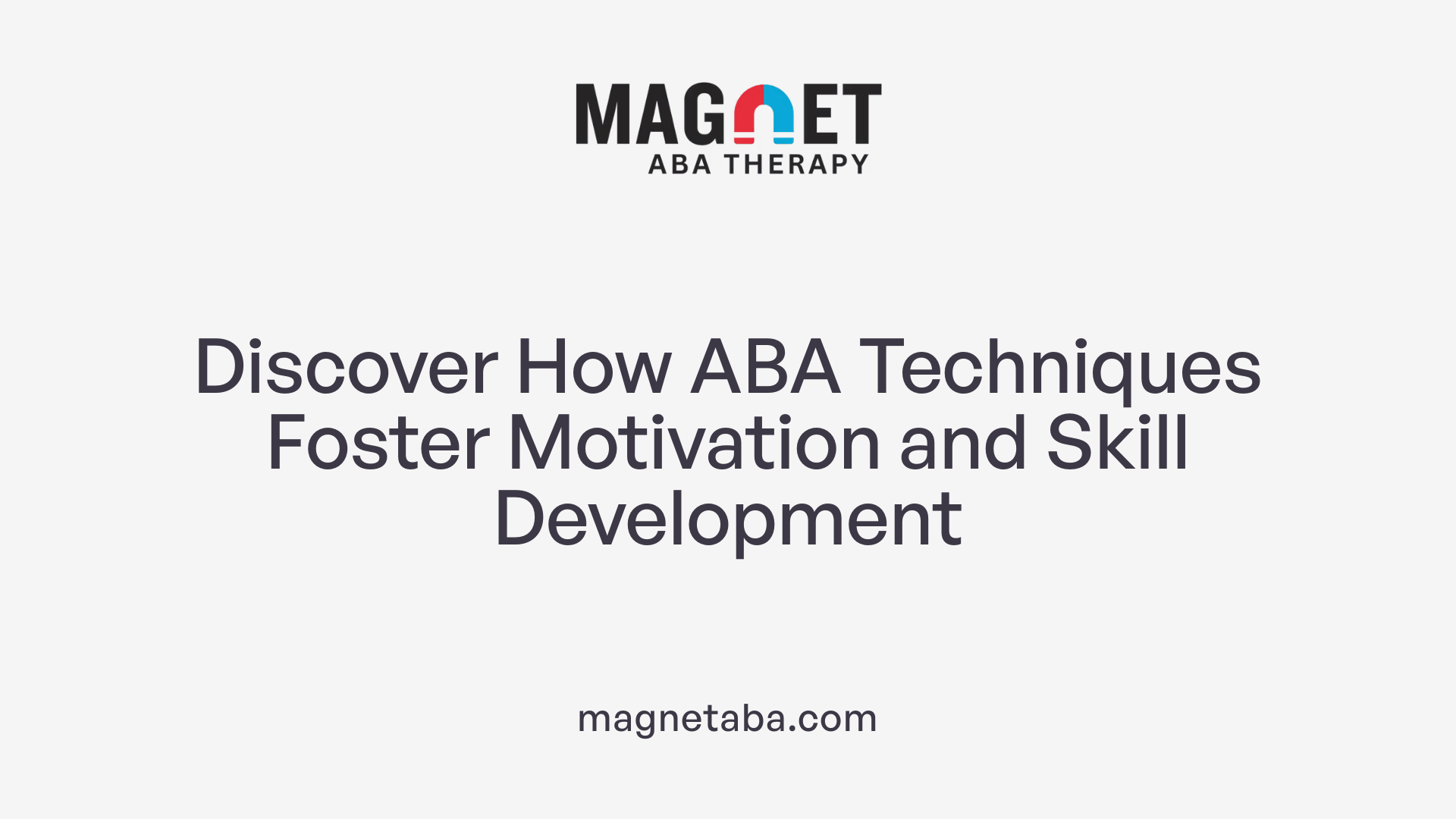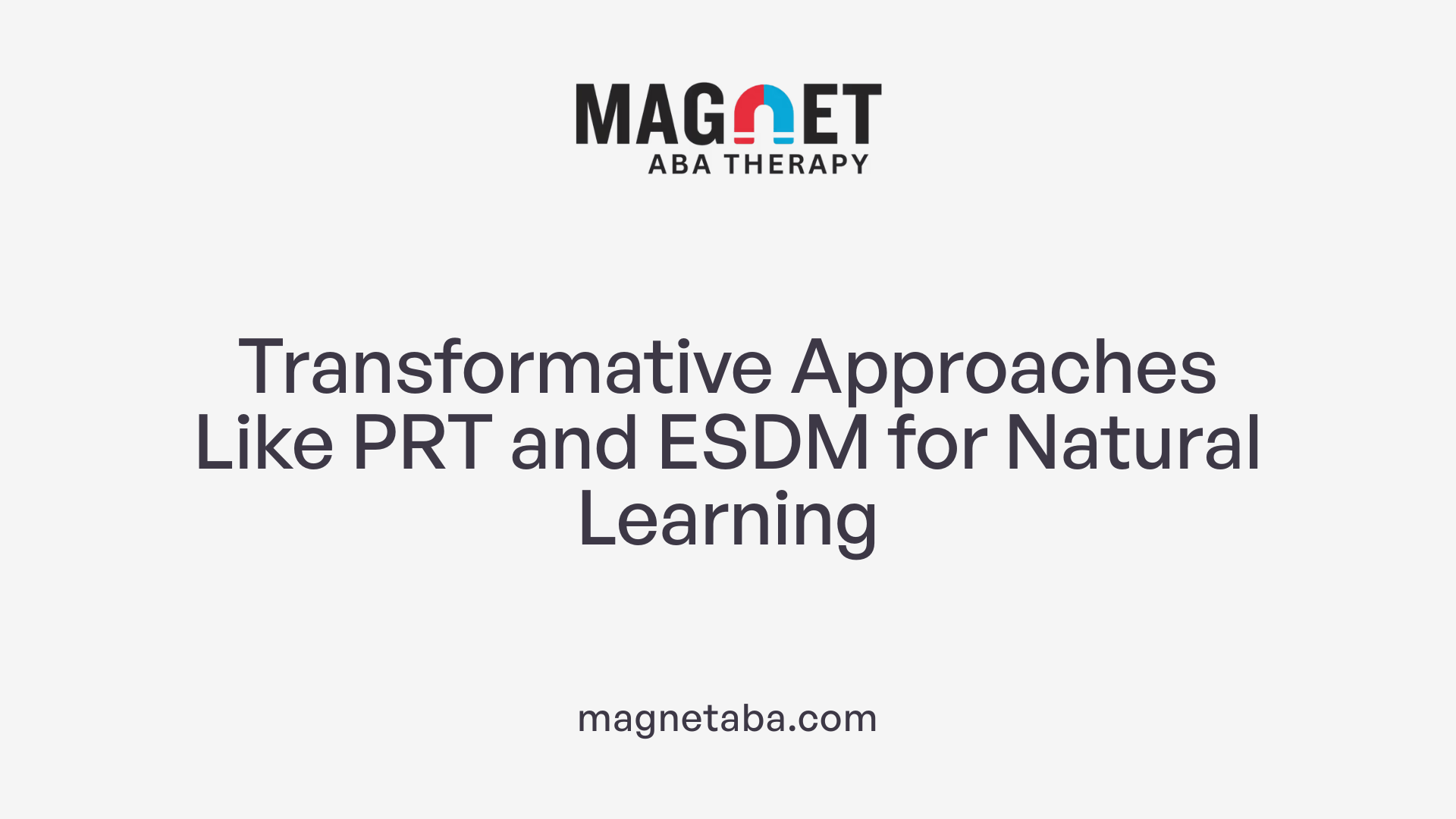Unveiling the Role of ABA in Cultivating Internal Motivation
Applied Behavior Analysis (ABA) therapy stands at the forefront of autism treatment, emphasizing the significance of reinforcing positive behaviors to nurture internal motivation. Rooted in behaviorism, this therapy highlights how environmental interactions shape actions, guiding individuals toward increased independence and self-driven skill acquisition. This article explores how ABA supports the development of internal motivation in individuals with autism, detailing the principles, techniques, and collaborative approaches that make this therapy effective and empowering.
Foundations of Behaviorism: The Science Behind ABA

Origins of behaviorism
Behaviorism emerged in the early 20th century with John B. Watson's 1913 work, which proposed that behavior results from experience and conditioning rather than innate or mental processes. This theory laid the groundwork for its application in learning and therapy.
Principles of conditioning
Behaviorism centers on conditioning mechanisms that shape behavior. Classical conditioning pairs a neutral stimulus with a natural stimulus to evoke a learned response, as demonstrated by Pavlov's experiments with dogs. Operant conditioning involves learning through consequences, where behaviors followed by reinforcement are more likely to recur.
Observable behavior focus
Behaviorism prioritizes observable behavior over internal thoughts or feelings, asserting that only measurable actions can be scientifically studied. This focus informs Applied Behavioral Analysis (ABA), which uses environmental stimuli and reinforcement to promote positive behavior change.
What is the theoretical basis for ABA therapy?
ABA therapy is deeply rooted in behaviorism, emphasizing that behaviors develop through conditioning and environment interaction. It applies the science of learning by systematically reinforcing desired behaviors and reducing maladaptive ones. ABA harnesses the principles of classical and operant conditioning to teach new skills and modify behaviors, making it an evidence-based intervention for children with autism and other developmental challenges.
Defining Applied Behavior Analysis (ABA) Therapy

What is Applied Behavior Analysis (ABA) therapy?
Applied Behavior Analysis (ABA) therapy is a research-based and scientifically validated treatment that focuses on applying behavioral principles to bring about meaningful changes in behavior. It is particularly effective for children with autism spectrum disorder, aiming to improve communication, social interaction, self-care, and academic skills while reducing challenging behaviors.
How does ABA therapy use data-driven individualized treatment?
ABA therapy is highly individualized, beginning with formal assessments and family interviews conducted by a Board-Certified Behavior Analyst (BCBA). Each child’s unique strengths, needs, interests, and preferences shape a personalized treatment plan. Progress is systematically tracked using data collection methods such as direct observation and ABC (Antecedent-Behavior-Consequence) data to continuously refine therapy strategies.
What are the main behavior modification principles in ABA?
ABA uses techniques grounded in behaviorism, including:
- Positive reinforcement to encourage desirable behaviors
- Prompting and systematic fading of prompts to promote independence
- Breaking skills into small, manageable steps (task analysis)
- Implementing discrete trial training to teach specific skills through repeated practice
- Utilizing natural routines and play-based methods like Pivotal Response Treatment to motivate and generalize skills
Where is ABA therapy provided and what are its goals?
This therapy is delivered intensively, often 25-40 hours per week, in multiple settings such as clinics, homes, and schools. It aims not only to develop core functional skills (e.g., potty training, handwashing, feeding) but also to enhance social awareness, peer interactions, and academic engagement. Importantly, ABA also addresses challenging behaviors like aggression and self-injury, fostering empowerment, independence, and improved quality of life.
Mechanisms of ABA: How Therapy Cultivates Internal Motivation

What are the main techniques used in ABA therapy?
ABA therapy integrates several effective strategies to foster skill development and internal motivation among children with autism. One of the core techniques is positive reinforcement, where desirable behaviors are encouraged by providing rewards that naturally follow the action, increasing the likelihood that these behaviors will occur again.
Prompting and fading are essential tools used to help learners acquire new skills. Therapists initially offer prompts—such as verbal cues, gestures, or physical guidance—to assist the child in performing a behavior. Over time, these prompts are systematically reduced or removed (fading) to promote independence.
Another important method is skill-breaking and shaping. Complex behaviors are divided into smaller, manageable steps, making it easier for the child to learn incrementally. As each step is mastered, therapists gradually shape the skill toward the full, desired behavior.
Finally, ABA emphasizes teaching in the natural environment, encouraging children to apply skills during everyday routines and real-life settings rather than only in structured sessions. This approach supports generalization of learned behaviors, helps maintain motivation by linking learning to natural rewards, and encourages autonomy.
Together, these techniques—alongside discrete trial training, behavior chaining, modeling, and use of visual supports—form a comprehensive framework. This framework effectively promotes the children’s intrinsic motivation by aligning skill acquisition with engaging, meaningful experiences and fostering their ability to initiate and sustain behaviors independently.
Tailoring ABA Therapy to Foster Personal Interests and Strengths

How is ABA tailored to individual needs?
ABA therapy is highly personalized, designed to meet the unique needs of each child with autism. A Board Certified Behavior Analyst (BCBA) plays a central role in this process by developing individualized treatment plans. These plans result from detailed formal assessments and thorough family interviews that provide insight into the child's abilities, preferences, and areas where support is needed.
Individualized treatment plans and incorporating interests
The treatment plan purposefully incorporates the child's personal interests and strengths to enhance motivation and engagement. By using activities and topics that naturally appeal to the child, therapy becomes more enjoyable and effective. Integrating these preferences helps children develop new skills with greater enthusiasm and promotes independence as they progress through the therapy.
Role of Board Certified Behavior Analysts
BCBAs are responsible for tailoring the therapy to each child’s specific context. They carefully break down complex skills into manageable steps, ensuring teaching is aligned with the child’s pace and learning style. Through constant data collection and assessment, BCBAs adjust treatment approaches to optimize outcomes and support meaningful skill development.
In summary, ABA therapy's success heavily depends on personalized plans crafted by BCBAs that leverage a child's individual interests and strengths, making learning both accessible and rewarding.
Collaborative Approaches Enhancing Motivation and Progress

How Are Families Involved in ABA Therapy?
Family involvement is fundamental to the success of ABA therapy. Parents and caregivers receive training to reinforce learned skills at home and in everyday routines. This consistent support fosters motivation in children and encourages the generalization of skills beyond the therapy setting.
What Training Do Caregivers Receive?
Caregiver training includes teaching specific ABA techniques, data collection methods, and ways to provide positive reinforcement effectively. Caregivers also learn how to implement behavioral strategies during daily activities, which helps maintain progress and promotes independence.
How Does Collaboration with Other Professionals Work?
ABA therapy involves coordinated efforts among Board-Certified Behavior Analysts (BCBAs), licensed behavior therapists, psychologists, speech therapists, and occupational therapists. This interdisciplinary collaboration ensures that treatment plans address all developmental areas, including communication and motor skills, creating a holistic approach tailored to each child's needs.
Who Provides ABA Therapy Services and What Is Their Role?
ABA services are typically delivered by BCBAs, licensed behavior therapists, and psychologists with expertise in behavioral interventions. These professionals work closely with families, offering direct training and support to caregivers to generalize skills across environments, ensuring consistency and reinforcing motivation outside therapy sessions.
These collaborative approaches emphasize empowerment and promote meaningful skill development through individualized and compassionate care, ultimately leading to greater independence and happiness for children with autism.
Evidence-Based Practices Supporting Behavioral Change

What role do token economies play in behavioral change?
Token economies are a structured reinforcement system used in ABA therapy where individuals earn tokens for exhibiting desired behaviors. These tokens can later be exchanged for preferred items or activities, motivating positive behavior consistently. This method helps shape and maintain new skills by providing immediate, tangible rewards that support learning and behavior modification.
How does discrete trial training work within ABA?
Discrete Trial Training (DTT) breaks down skills into small, manageable steps taught systematically through repeated trials. Each trial consists of an instruction, the individual's response, and a consequence, typically a reward or prompt. DTT is highly effective in teaching language, social, and self-help skills, making it a cornerstone of ABA interventions.
What are visual supports and social narratives, and how do they aid individuals with autism?
Visual supports include tools like picture schedules and video modeling that provide clear, consistent cues to enhance understanding and independence. Social narratives are short stories or scripts that explain social situations, promoting better comprehension and appropriate responses. Both techniques are integrated into ABA to improve social skills, reduce anxiety, and support communication.
How does ABA therapy help individuals with autism?
ABA assists individuals with autism by applying evidence-based learning and behavioral techniques that increase helpful behaviors and reduce harmful ones. Through structured skill-building, reinforcement strategies, and data collection, ABA promotes language, social interaction, self-care, and academic growth, thereby fostering independence and enhancing intrinsic motivation.
Innovative ABA Models Enhancing Motivation Through Play and Natural Routines

What is Pivotal Response Treatment (PRT)?
Pivotal Response Treatment (PRT) is a play-based approach derived from Applied Behavioral Analysis (ABA) that focuses on enhancing pivotal behaviors such as motivation and communication initiation. Unlike traditional ABA that may focus on isolated skills, PRT integrates learning into everyday routines, both at home and in clinic settings. This naturalistic approach aims to bring broad improvements in social communication and academic skills by using meaningful, child-directed activities that foster engagement and learning.
How does the Early Start Denver Model (ESDM) apply ABA principles?
The Early Start Denver Model (ESDM) targets children aged one to four years and is designed to boost social, emotional, cognitive, and language development while reducing autism spectrum disorder symptoms. ESDM is delivered through play and daily routines by therapists, parents, and family members, which helps embed learning naturally into children’s lives. Research supports its effectiveness in creating gentle but impactful developmental gains using ABA techniques adapted for very young children.
What role do naturalistic teaching strategies play in ABA?
Naturalistic teaching strategies emphasize learning in real-life environments using natural reinforcers. These include approaches such as incidental teaching, where desired behaviors are taught during naturally occurring moments, and peer-mediated interventions, which utilize social interactions for skill-building. By integrating visual supports, video modeling, and social narratives, these strategies ensure that teaching is motivating and contextually relevant, promoting meaningful and lasting skill acquisition.
Together, PRT, ESDM, and naturalistic teaching strategies represent innovative and compassionate ABA models that prioritize motivation, engagement, and meaningful progress in real-world settings.
Long-Term Impact: From Skill Acquisition to Independence and Happiness

Development of daily living skills
ABA therapy focuses on teaching children with autism essential daily living skills, such as potty training, handwashing, tooth brushing, feeding, dressing, and hygiene. These skills are broken down into manageable steps and taught systematically, helping children gain independence in everyday tasks. Mastery of these foundational skills contributes significantly to a child's autonomy within family and community settings.
Social skills training
A crucial part of ABA therapy involves social skills training, which helps children improve communication, interpret body language, facial expressions, and nonverbal cues. This training often takes place through individual and group sessions and is designed to build friendships, strengthen relationships, and boost self-confidence in social situations. ABA techniques like peer-mediated interventions and social narratives enhance positive social interactions and reduce challenging behaviors in social contexts.
Empowerment and quality of life
High-quality ABA services prioritize individual values and goals, emphasizing meaningful skill development in natural environments. The approach promotes empowerment, independence, and happiness by supporting rights such as expressing preferences, privacy, safety, leisure, vocational opportunities, and social connections. Through personalized, compassionate, and person-centered ABA, children with autism are equipped to live fulfilling and autonomous lives. Parent involvement and collaboration with families and professionals further enrich the therapy experience, ensuring long-term positive outcomes that extend beyond skill acquisition to overall quality of life.
Measuring Success and Progress in ABA Therapy

How is progress measured in ABA therapy?
In Applied Behavioral Analysis (ABA) therapy, measuring progress involves systematic data collection to objectively monitor a child's development and response to interventions. Therapists gather detailed information on targeted behaviors to evaluate the effectiveness of teaching strategies and adjust treatment plans accordingly.
What data collection techniques are used?
ABA therapists employ a variety of data collection methods including:
- Direct Observation: Watching the child in natural or clinical settings to record behaviors as they occur.
- Frequency Recording: Counting how many times specific behaviors happen within a session.
- Duration Recording: Measuring how long a behavior lasts.
- Interval Sampling: Checking if a behavior occurs during predefined time segments.
These techniques provide quantitative evidence of behavioral changes over time.
What is ABC data analysis?
ABC data stands for Antecedent-Behavior-Consequence data. This method captures the context surrounding a behavior by recording:
- Antecedent: What happens right before the behavior.
- Behavior: The specific action observed.
- Consequence: What happens immediately after the behavior.
Analyzing ABC data helps therapists understand triggers and reinforcements influencing behaviors, enabling more effective intervention strategies. By combining these techniques, ABA therapists create a comprehensive picture of a child’s progress, ensuring data-driven and individualized treatment.
Empowering Through Behavior: The Path to Intrinsic Motivation
ABA therapy, grounded in behaviorism and enriched by individualized, evidence-based approaches, plays a vital role in supporting the development of internal motivation in individuals with autism. Through positive reinforcement, structured teaching methods, and collaborative support, ABA fosters independence, skill mastery, and personal empowerment. The therapy’s emphasis on tailoring interventions to natural environments and personal interests ensures that motivation evolves from within, enabling meaningful social participation and enhancing quality of life.
References
- The Key Concepts of Behaviorism in Psychology
- Behavioral Therapy for Autism Spectrum Disorder in Children
- Frequently Asked Questions for ABA Therapy
- Our Position on Applied Behavior Analysis
- Applied Behavior Analysis (ABA)
- The Top 10 Reasons Children With Autism Deserve ABA
- Applied Behavior Analysis (ABA)
- 6 Benefits of ABA Therapy for Children with Autism
- Applied Behavior Analysis (ABA)
- Applied Behavior Analysis (ABA)












